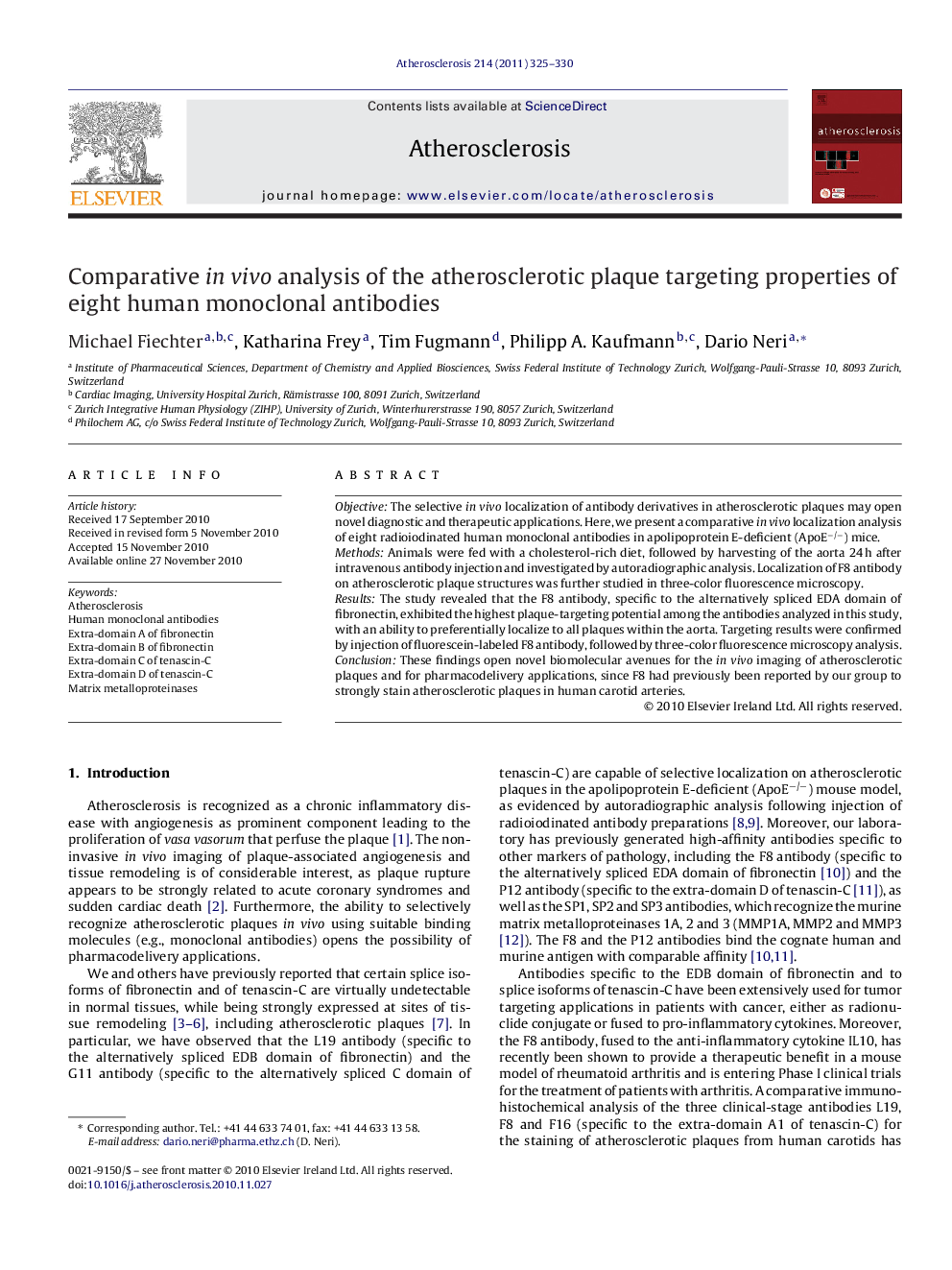| Article ID | Journal | Published Year | Pages | File Type |
|---|---|---|---|---|
| 5949950 | Atherosclerosis | 2011 | 6 Pages |
ObjectiveThe selective in vivo localization of antibody derivatives in atherosclerotic plaques may open novel diagnostic and therapeutic applications. Here, we present a comparative in vivo localization analysis of eight radioiodinated human monoclonal antibodies in apolipoprotein E-deficient (ApoEâ/â) mice.MethodsAnimals were fed with a cholesterol-rich diet, followed by harvesting of the aorta 24Â h after intravenous antibody injection and investigated by autoradiographic analysis. Localization of F8 antibody on atherosclerotic plaque structures was further studied in three-color fluorescence microscopy.ResultsThe study revealed that the F8 antibody, specific to the alternatively spliced EDA domain of fibronectin, exhibited the highest plaque-targeting potential among the antibodies analyzed in this study, with an ability to preferentially localize to all plaques within the aorta. Targeting results were confirmed by injection of fluorescein-labeled F8 antibody, followed by three-color fluorescence microscopy analysis.ConclusionThese findings open novel biomolecular avenues for the in vivo imaging of atherosclerotic plaques and for pharmacodelivery applications, since F8 had previously been reported by our group to strongly stain atherosclerotic plaques in human carotid arteries.
